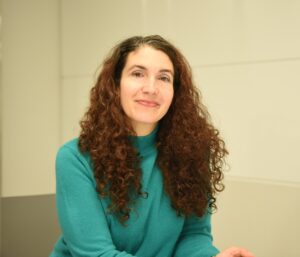
Many people have heard of Seasonal Affective Disorder (SAD). But did you know, there is no official “Seasonal Affective Disorder” listed in the Diagnostic and Statistical Manual (DSM)? Rather, there is a “seasonal onset” specifier for Major Depressive Disorder (MDD). Colloquially, however, we use the term SAD quite a bit, and we all have a general understanding of what it means—the listlessness, lethargy and frustration that may arise during the months of darkness and cold.
When do people typically experience Seasonal Affective Disorder?
Some feel that the time between January and March are the hardest months of the year. For those with a typical SAD presentation, symptoms generally begin in October and November. They feel a sense of dread, “winter is coming” after all. For some, the holidays of November and December provide enough distraction to keep them asymptomatic. For others, holidays are marked with stress and are the opposite of an enjoyable distraction. But December is the darkest month of the year. Once on the other side of the solstice, the days start to get longer, but it will not be until March that daylight hours (and the person experiencing SAD) start to feel normal again.
So, what can we do? To start, we must be able to recognize the signs and symptoms within ourselves, and even in others.
What are some of the symptoms of Seasonal Affective Disorder?
If you experience any of the symptoms below between October and March, then it is a good idea to make an appointment with your Board Certified PA or other medical provider to determine if SAD, or MDD with a seasonal onset, is the cause.
- depressed mood
- anhedonia (loss of interest in what you previously enjoyed)
- sleep disruption
- under/overeating
- low self-worth
- fatigue
- isolation
- hopelessness
One thing that is important to note about these symptoms is that once a person has experienced them, it is likely they will experience them again, so talking with your medical provider is important.
What kind of treatment options are there for Seasonal Affective Disorder?
Some treatment options include:
- Psychotherapy. Cognitive behavioral therapy—one of the most “task-oriented” approaches — can be helpful to recognize negative thoughts around this period, examining them and developing new thought patterns.
- Psychotropics. The ideal time to introduce medication is just before the seasonal change. For example, for those with winter-onset SAD, September is the optimal time to start on a medication to work through tolerability issues and establish a therapeutic level.
- Bright light treatment. Bright light therapy with a dose of 10,000Lux 15 minutes twice a day is an established treatment that can increase energy and optimism.
- Vitamin D supplements. Although vitamin D supplementation may also be utilized, it is worth establishing if there is a deficiency prior to initiating treatment.
- Routine exercise. Establishing an exercise routine prior to and in anticipation of symptom onset can help maintain emotional balance during the long, dark days. What’s the optimal exercise for SAD? The one you enjoy doing and can stick to!
- Exposure to the outdoors. Time outdoors is recommended as well, even in the cold. Exposure to sunlight—even if under the clouds—can go a long way and help you sleep better at night. Should you choose to exercise indoors, try to make sure you spend some time outdoors as well, even if just sitting bundled up watching snowflakes fall. Time spent outdoors helps promote sleep and may create a positive mood.
Your mental well-being is just as important to maintain as your physical well-being, but issues with our mental health can sometimes be harder to recognize. It is important to discuss any symptoms or concerns with your medical provider so that treatment can be implemented in order to return your mental health to a positive state.
Reference
https://www.nimh.nih.gov/health/publications/seasonal-affective-disorder#part_6688

Jessica Spissinger, LICSW, PA-C, CAQ-Psychiatry
Jessica Spissinger is a Board Certified PA who holds a CAQ in psychiatry. She graduated from Rosalind Franklin University in 2013 and has practiced in psychiatry ever since. In July 2023, she was voted President-Elect for the Association of PAs in Psychiatry. Spissinger also recently started working in PA education and is a faculty instructor at Mass General Brigham Institute of Health Professions (MGH-IHP) and launched a post-graduate PA Accelerated Certificate in Psychiatry in Spring 2023.

